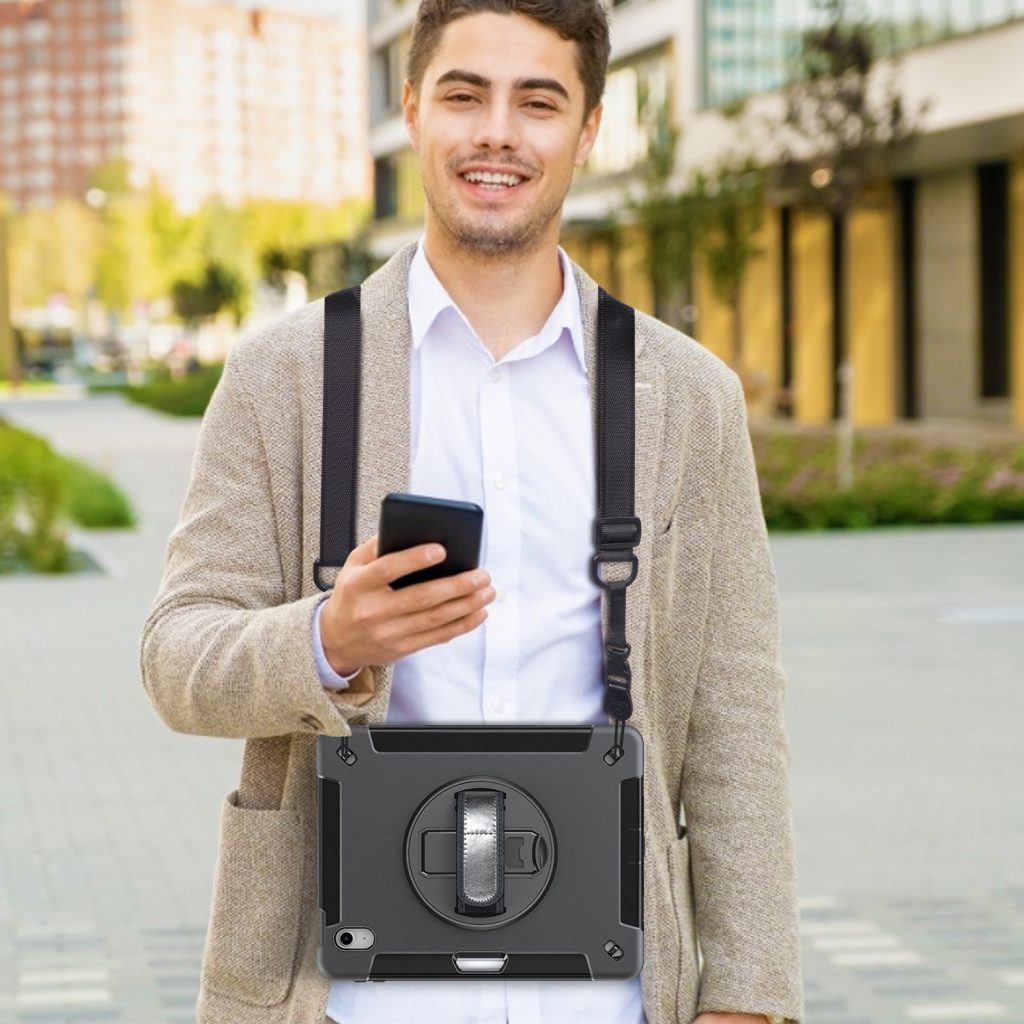When embarking on a project that requires durability and strength, the importance of choosing the right materials cannot be overstated. One such material that has gained popularity for its versatility is nylon webbing strap. Whether you’re crafting gear for outdoor adventures, creating stylish accessories, or securing items during transport, selecting the appropriate nylon webbing strap can make all the difference. But with so many options available, how do you know which one to choose? Let’s dive into everything you need to consider when picking the perfect nylon webbing strap for your specific needs.

The Importance of Choosing the Right Nylon Webbing Strap
Choosing the right nylon webbing strap is crucial for any project requiring reliability and strength. The wrong choice can lead to failures, risking both safety and functionality.
Nylon webbing straps are known for their remarkable tensile strength. This makes them ideal for heavy-duty applications like towing or securing loads. If you select a strap that can’t handle the weight or stress of your task, you may encounter issues down the line.
Additionally, nylon’s resistance to abrasion and UV rays enhances durability in outdoor conditions. Using an inappropriate strap could result in wear and tear faster than expected.
Selecting the correct width and thickness also affects how well a strap performs under strain. A mismatched size might not provide adequate support, leading to potential hazards during use.
Investing time into choosing the right nylon webbing strap ensures your projects run smoothly while maintaining safety standards.
Choosing the right nylon webbing strap is crucial for ensuring safety and effectiveness in your projects. These straps are not just simple pieces of material; they play a vital role in securing loads, supporting weight, and providing reliability under stress.
Selecting an inappropriate strap can lead to accidents or equipment damage. For instance, using a lightweight strap for heavy-duty tasks could result in failure during critical moments.
Additionally, different applications require specific features such as tensile strength, weather resistance, and UV protection. A well-chosen nylon webbing strap can withstand harsh conditions while maintaining its integrity.
The versatility of these straps also means you have options tailored to various environments—from outdoor adventures to indoor repairs. Taking the time to choose wisely ensures that you get the durability and performance needed for success in any project.
Understanding the Different Types of Nylon Webbing
Nylon webbing comes in various types, each designed for specific applications. The most common type is flat nylon webbing, which offers excellent strength and flexibility. It’s ideal for everyday use, from belts to straps.
Then there’s tubular nylon webbing. This type features a hollow structure that provides additional cushioning and is often used in climbing or rescue situations due to its high load-bearing capacity.
Seatbelt webbing is another variant known for its durability and resistance to abrasion. As the name suggests, it’s primarily used in automotive safety systems but can also be adapted for heavy-duty projects.
You’ll find milspec (military specification) nylon webbing. Built to stringent standards, this option guarantees reliability under extreme conditions. Each type has unique properties suited for different scenarios, making your choice essential based on your project’s needs.

When choosing a nylon webbing strap, understanding the different types available is crucial. Each type serves specific purposes and offers unique characteristics.
There are several variations of nylon webbing. First, you have flat nylon webbing. This option is lightweight and versatile, making it ideal for general use like belts or pet leashes. Its flat design distributes weight evenly.
Next is tubular nylon webbing, which features a cylindrical shape that adds strength and flexibility. It’s commonly used in climbing gear due to its durability and ability to absorb shock effectively.
Then there’s heavy-duty nylon webbing designed for tougher applications such as towing or securing loads on vehicles. This type can handle significant stress without breaking down over time.
You might also encounter military-grade nylon webbing known for its exceptional resilience and reliability under extreme conditions. It’s often used in tactical gear where performance matters most.
Consider decorative options that come in various colors and patterns if aesthetics play a role in your project. These versions allow you to combine functionality with style seamlessly.
With all these choices at hand, identifying the right type of nylon webbing strap hinges upon your project’s requirements—strength, flexibility, or even visual appeal may dictate your selection process. Taking time to evaluate each variety ensures you choose wisely for optimal results every time.
Factors to Consider When Choosing a Nylon Webbing Strap
When selecting a nylon webbing strap, several key factors come into play. The first is strength. Assess the weight capacity needed for your project to ensure safety and reliability.
Next, consider the width of the strap. Wider straps distribute weight more evenly, making them ideal for heavy loads. Conversely, narrower straps can be useful for lighter applications.
Another factor is weather resistance. If your project involves outdoor use, choose a UV-stabilized option that won’t degrade in sunlight or harsh conditions.
Don’t overlook color and style either; these aspects can enhance aesthetics while still being functional.
Think about the buckle type if applicable—different designs offer varying levels of security and ease of use during operation. Each detail matters when it comes time to make your choice.
Choosing the right nylon webbing strap is vital for ensuring safety and performance in any project. The strength of the strap directly affects how much weight it can handle, making it essential to match its specifications with your requirements.
Each application demands different characteristics. For outdoor adventures, a weather-resistant strap might be necessary to withstand the elements. In contrast, crafting projects may require a softer touch or specific colors.
Durability plays a key role as well. A high-quality nylon webbing strap resists fraying and tearing over time, which means fewer replacements and more reliability during use.
Furthermore, proper width and thickness are crucial considerations. These factors influence comfort when worn against skin or used in applications like securing loads. Selecting an optimal size ensures functionality without compromising user experience or effectiveness.
Choosing the right nylon webbing strap involves several key factors. First, consider the load capacity. Each strap has a specific weight limit, which is crucial for safety and functionality. Make sure you select a strap that can handle your project’s demands.
Second, think about the width of the webbing. Wider straps distribute weight more evenly, making them suitable for heavy loads. However, if you need something more compact or lightweight for smaller projects, narrower options may be ideal.
Next is durability. Nylon webbing comes in various grades and qualities; choose one that matches your environmental conditions. If you’re working outdoors or in wet areas, look for water-resistant or UV-treated straps to ensure longevity.
The color and design might also play a role in your selection process if aesthetics matter to your project. Many manufacturers offer an array of colors and patterns to suit any style preference.
Check compatibility with hardware like buckles and hooks you’ll use alongside the strap. Ensuring everything fits together seamlessly will save time during assembly and enhance overall performance.
By thoughtfully considering these aspects when selecting a nylon webbing strap, you’ll be well-equipped to make informed choices tailored specifically to your needs.

Common Uses for Nylon Webbing Straps
Nylon webbing straps are incredibly versatile, making them essential in various applications. They’re commonly used in outdoor gear such as backpacks and tents due to their lightweight yet durable nature.
In the automotive world, these straps secure cargo during transport, ensuring safety on the road. Whether for strapping down equipment or securing items in a truck bed, they provide peace of mind.
The military also relies heavily on nylon webbing for tactical gear. From belts to harnesses, this material offers strength and reliability under pressure.
Additionally, many DIY enthusiasts use nylon webbing for crafting projects. It’s perfect for creating custom dog collars or stylish bags that withstand daily wear and tear.
Even in fashion design, nylon webbing finds its place as a trendy strap option for purses and accessories. Its adaptability truly makes it a go-to choice across multiple industries.
Nylon webbing straps have a variety of uses across multiple industries and everyday applications. Their strength, flexibility, and resistance to wear make them ideal for numerous projects.
Outdoor enthusiasts often rely on nylon webbing in their camping gear. From securing tents to making durable backpacks, the versatility is unmatched. Similarly, climbers use these straps in harnesses and gear slings due to their high tensile strength.
In the marine industry, nylon webbing serves essential purposes as well. Sailors utilize it for rigging and securing equipment on boats because of its ability to withstand harsh weather conditions without degrading.
Manufacturers also find nylon webbing invaluable in creating safety belts and harnesses for various vehicles. The material’s durability ensures that it can handle significant loads while providing safety features crucial for transport.
Even within home décor or crafting projects, these straps come into play frequently. DIY enthusiasts appreciate how easy they are to work with when making custom furniture or storage solutions.
Whether you’re an outdoor adventurer or just someone looking to complete a project at home, understanding how a nylon webbing strap fits into your needs will guide you toward selecting the perfect option every time.
Brands and Suppliers to Consider
When searching for a nylon webbing strap, the choice of brand can significantly impact quality and reliability. Some brands have built a reputation for excellence in materials and craftsmanship.
Consider companies like Strapworks, known for their extensive range of colors and widths. They offer customization options that make it easy to find exactly what you need.
Another notable mention is SEI Industries, which specializes in heavy-duty straps designed for industrial use. Their products are both durable and tested under extreme conditions.
For outdoor enthusiasts, Nite Ize provides versatile straps ideal for camping gear or hiking applications. Their innovative designs often include added features like adjustable lengths.
Don’t overlook smaller suppliers on platforms like Etsy or Amazon; they often offer unique styles at competitive prices while supporting small businesses directly. Always check reviews to ensure you’re choosing the best option available.

Tips for Maintenance and Care of Nylon Webbing Straps
To keep your nylon webbing straps in top shape, regular cleaning is essential. Use mild soap and water to gently scrub away dirt and grime. Avoid harsh chemicals that can degrade the material.
After washing, hang the straps to air dry. Direct sunlight can weaken nylon over time, so find a shaded spot whenever possible.
Check for any fraying or damage before each use. If you notice wear, it might be time to replace the strap rather than risk failure during critical tasks.
Store your straps properly when not in use; a cool, dry place will prevent mold and mildew buildup. Rolling them instead of folding helps maintain their integrity.
Avoid exposing your nylon webbing straps to extreme heat or sharp edges that could cause cuts or burns. Proper care extends their life significantly while ensuring safety during every use.
Taking care of your nylon webbing straps can significantly extend their lifespan and maintain their performance. Here are some tips to keep them in top shape.
First, always clean your straps after use. Dirt and grime can wear down the fibers over time. Hand wash with mild soap and warm water, then rinse thoroughly to remove any residue. Avoid using harsh chemicals or bleach, as these can damage the material.
When it comes to drying, air-drying is best. Hang them up away from direct sunlight to prevent UV damage which can lead to fading or weakening of the strap’s integrity.
Store your nylon webbing straps properly when not in use. Keep them in a cool, dry place where they won’t get tangled or crumpled up with other gear.
Regularly inspect your straps for signs of wear and tear such as fraying edges or discoloration. Catching potential issues early on will help you avoid accidents later.
Consider how often you’re using the straps and for what purpose; rotating between multiple sets may relieve stress on individual pieces and prolong overall usage.
By following these maintenance tips, you’ll ensure that your nylon webbing straps remain reliable for all your projects.
Conclusion
Choosing the right nylon webbing strap can significantly impact your project’s success. It’s essential to understand the various types of nylon webbing available and what each is best suited for. By considering factors such as strength, width, and intended use, you can find a strap that meets your specific requirements.
Nylon webbing straps are versatile, making them suitable for numerous applications. From outdoor gear to pet collars and even crafting projects, their durability ensures they withstand daily wear and tear while providing reliable support.
When searching for brands or suppliers, consider those known for quality materials and customer satisfaction. It’s wise to read reviews or seek recommendations from others who have used these products before.
Maintaining your nylon webbing is equally important. Regular cleaning and proper storage will prolong its lifespan while ensuring it remains functional when you need it most.
Finding the perfect nylon webbing strap may take some effort but will undoubtedly pay off in performance and reliability in any project you undertake.

